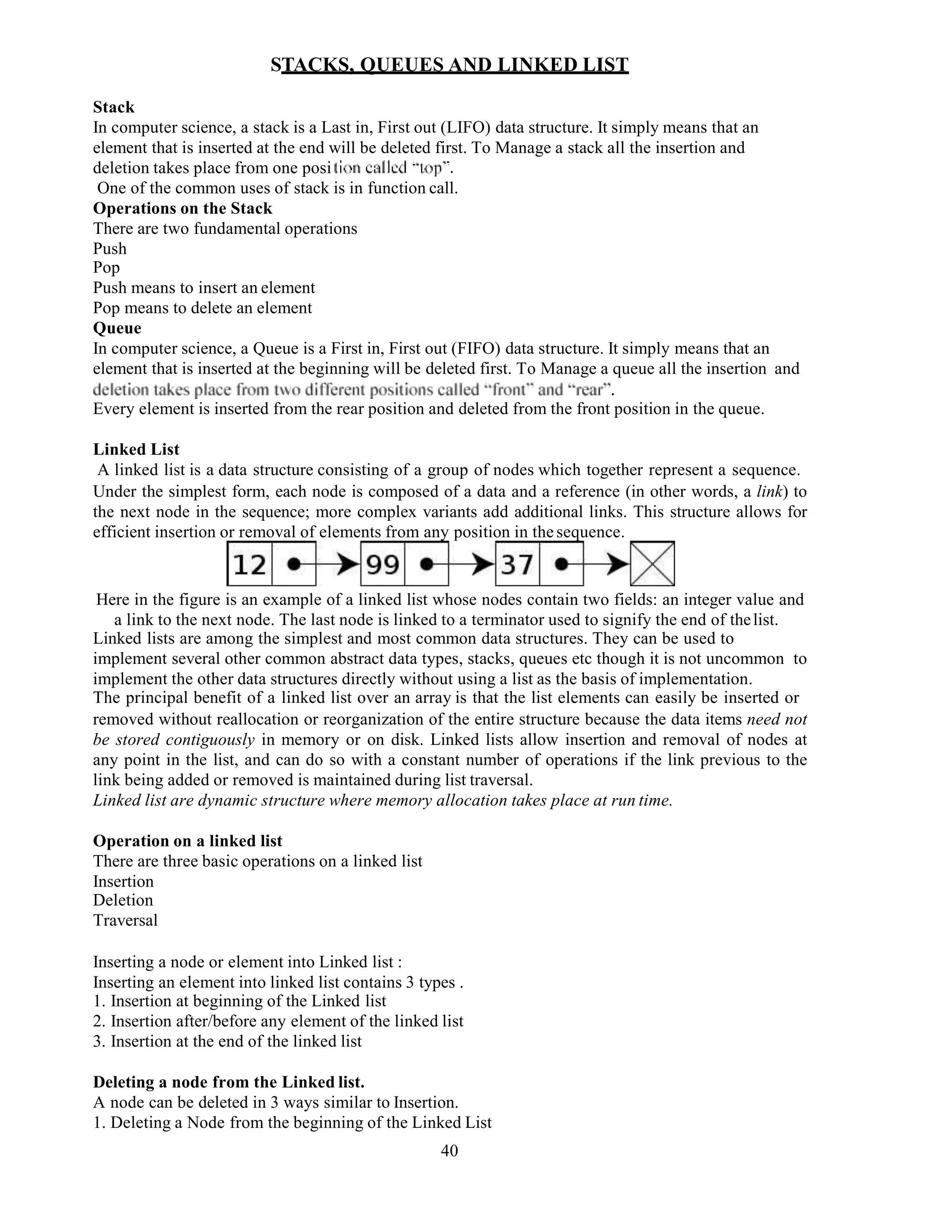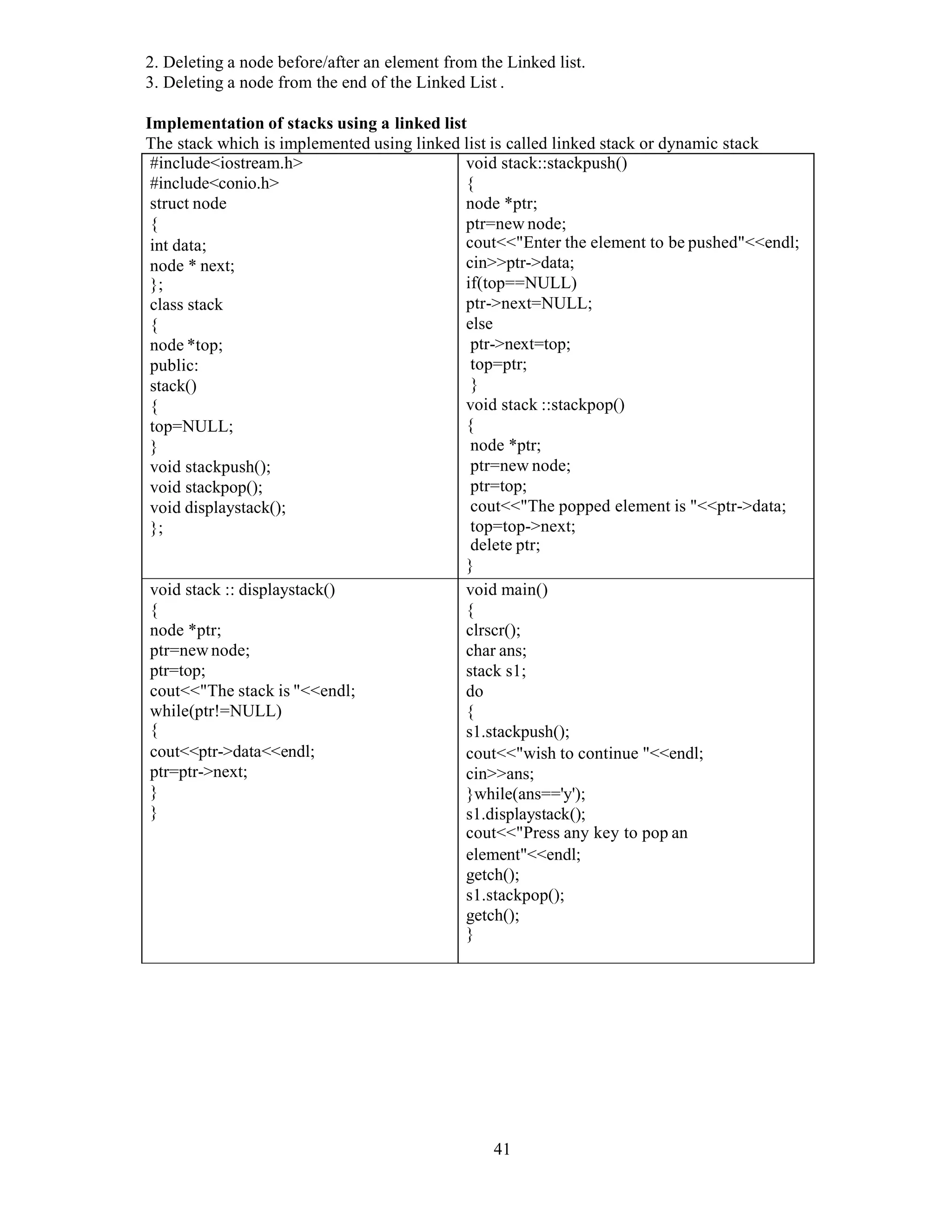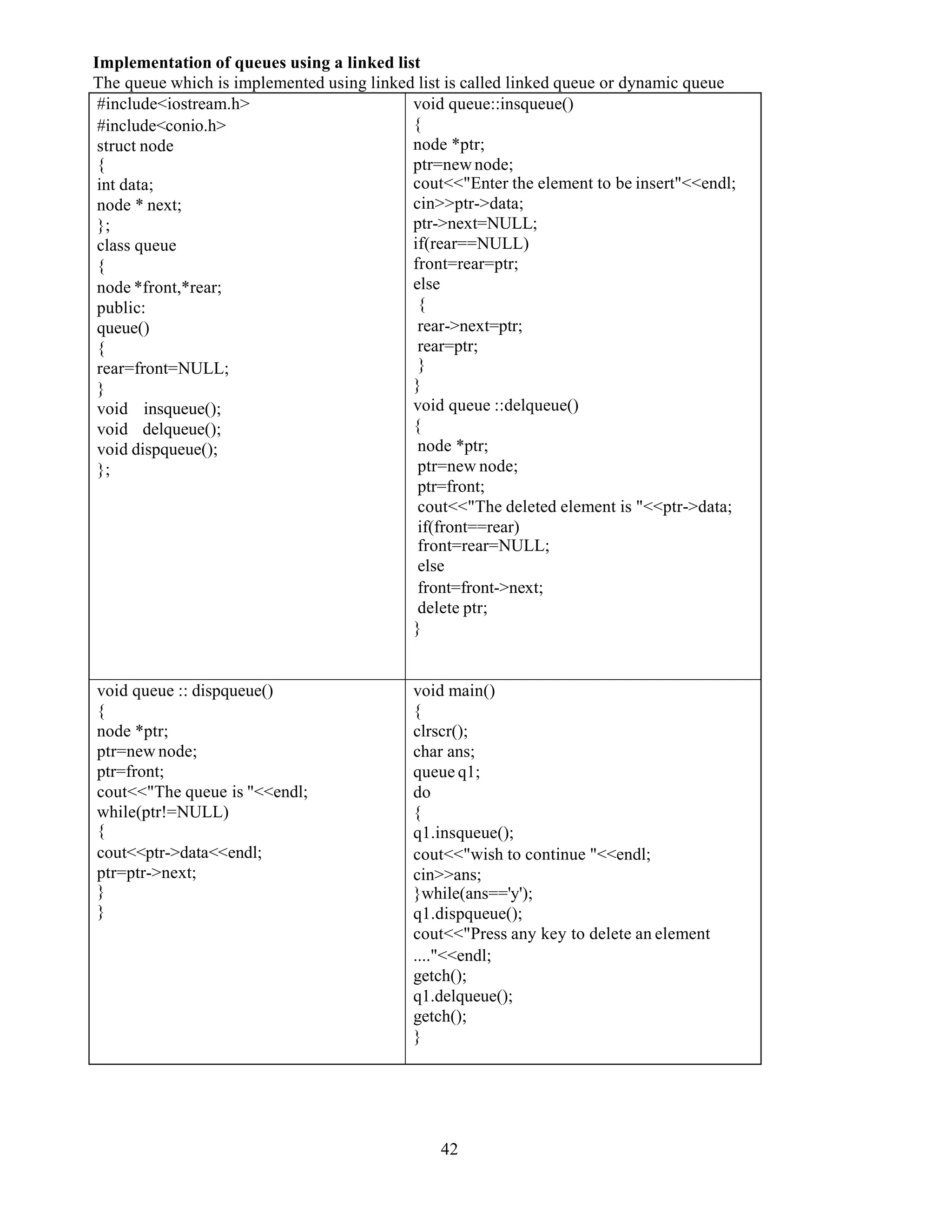The document discusses stacks, queues and linked lists. It provides details about the operations and implementations of each:
Stacks follow the LIFO principle and have push and pop operations. Queues follow the FIFO principle with insertion at the rear and deletion from the front.
Linked lists consist of nodes with data and links. They allow efficient insertion/removal anywhere through use of pointers. Linked lists can implement stacks and queues. Operations on linked lists include insertion, deletion, and traversal. Implementations of stacks and queues using linked lists are also provided through code examples.



![Some Questions based on Board Examination Linked stack & Linked Queue
allocated Queue of Customers implemented with the help of the following structure:
struct Customer
{ int CNo;
char CName[20];
Customer *Link;
};
Ans: struct Customer
{
int CNo;
char CName[20];
Customer *Link;
} *Front, *Rear, *ptr;
void DELETE()
{
if(Front = = NULL)
n Queue Underflow
else
{
ptr = Front;
Front = Front Link;
delete ptr;
}
}
allocated Stack of Books implemented with the help of the following structure.
struct Book
{ int BNo;
char BName[20];
Book *Next;
};
Ans: struct Book
{
int BNo;
char BName[20];
Book *Next;
}*Front, *Rear, *ptr;
void POP()
{
if(Front = = NULL)
n Stack Underflow
else
{
ptr = Front;
Front = Front Link;
delete ptr; }
}
43](https://image.slidesharecdn.com/stackqueuelinklist-200317135348/75/STACK-LINKED-LIST-AND-QUEUE-4-2048.jpg)
![=
44
Q 3. Evaluate the postfix notaion of expression.
4, 10 , 5 , + , * , 15 , 3 ,/ , -
Q. 4.
Sno. Symbol Stack
0 [
1 4 [4
2 10 [4,10
3 5 [4,10,5
4 + [4
[4,15
5 * [
[60
6 15 [60,15
7 3 [60,15,3
8 / [60
[60,5
9 - [
[55
10 ] 55 Ans](https://image.slidesharecdn.com/stackqueuelinklist-200317135348/75/STACK-LINKED-LIST-AND-QUEUE-5-2048.jpg)